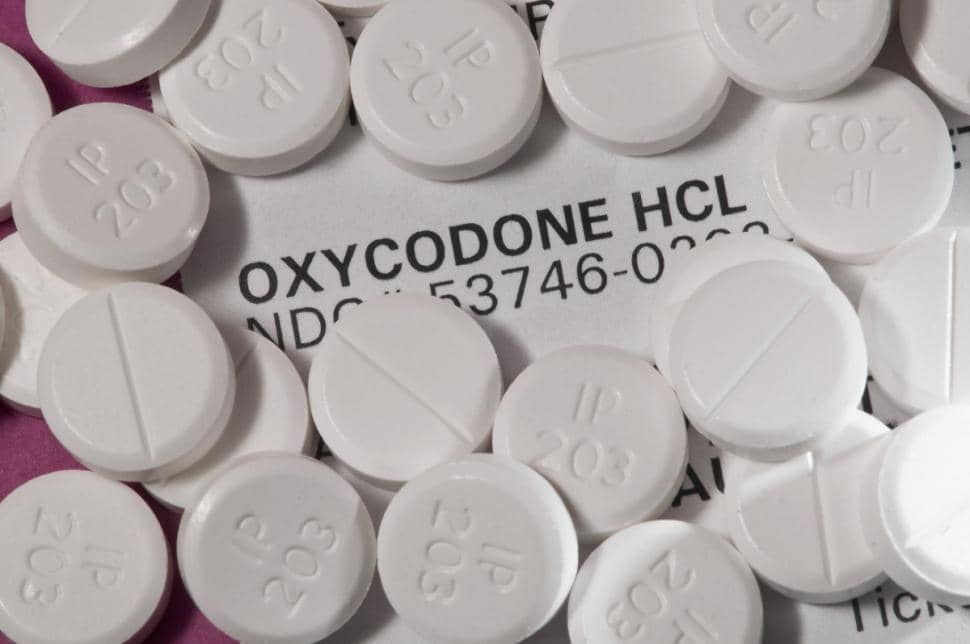What is oxycodone?
Oxycodone is an opioid pain medication sometimes called a narcotic.
Oxycodone is used to treat moderate to severe pain.
The extended-release form of oxycodone is for around-the-clock treatment of pain and should not be used on an as-needed basis for pain.
Before taking this medicine
You should not use oxycodone if you are allergic to it, or if you have:
- severe asthma or breathing problems; or
- a blockage in your stomach or intestines.
You should not use this medicine if you are already using a similar opioid medicine and are tolerant of it. Do not use this medicine if you have used an MAO inhibitor in the past 14 days, such as isocarboxazid, linezolid, phenelzine, rasagiline, selegiline, or tranylcypromine, or have received a methylene blue injection.
Most brands of oxycodone are not approved for use in people under the age of 18. OxyContin should not be given to a child younger than 11 years old.
To make sure this medicine is safe for you, tell your doctor if you have ever had:
- breathing problems, sleep apnea;
- a head injury, brain tumor, or seizures;
- drug or alcohol addiction, or mental illness;
- lung disease;
- liver or kidney disease;
- thyroid disorder;
- adrenal disease (such as Addison’s disease;
- urination problems; or
problems with your gallbladder or pancreas.
How should I use oxycodone?
Take oxycodone exactly as prescribed. Follow the directions on your prescription label and read all medication guides. Never use this medicine in larger amounts, or for longer than prescribed. Tell your doctor if you feel an increased urge to take more of oxycodone.
Never share opioid medicine with another person, especially someone with a history of drug abuse or addiction. MISUSE CAN CAUSE ADDICTION, OVERDOSE, OR DEATH. Keep the medication in a place where others cannot get to it. Selling or giving away opioid medicine is against the law.
Stop taking all other around-the-clock opioid pain medicines when you start taking extended-release oxycodone.
Take with food.
Swallow the capsule or tablet whole to avoid exposure to a potentially fatal overdose. Do not crush, chew, break, open, or dissolve.
If you cannot swallow a capsule whole, open it and sprinkle the medicine into a spoonful of pudding or applesauce. Swallow the mixture right away without chewing. Do not save it for later use.
Never crush or break an oxycodone pill to inhale the powder or mix it into a liquid to inject the drug into your vein. This can cause in death.
Measure liquid medicine carefully. Use the dosing syringe provided, or use a medicine dose-measuring device (not a kitchen spoon).
You should not stop using oxycodone suddenly. Follow your doctor’s instructions about gradually decreasing your dose.
Store at room temperature, away from heat, moisture, and light. Keep track of your medicine. Oxycodone is a drug of abuse and you should be aware if anyone is using your medicine improperly or without a prescription.
Do not keep leftover opioid medication. Just one dose can cause death in someone using this medicine accidentally or improperly. Ask your pharmacist where to locate a drug take-back disposal program. If there is no take-back program, flush the unused medicine down the toilet.
Oxycodone side effects
Get emergency medical help if you have signs of an allergic reaction to oxycodone: hives; difficult breathing; swelling of your face, lips, tongue, or throat.
Opioid medicine, including oxycodone, can slow or stop your breathing, and death may occur. A person caring for you should give naloxone and/or seek emergency medical attention if you have slow breathing with long pauses, blue-colored lips, or if you are hard to wake up.
Call your doctor at once if you have:
- noisy breathing, sighing, shallow breathing, breathing that stops during sleep;
- a slow heart rate or weak pulse;
- cold, clammy skin;
- a light-headed feeling, like you, might pass out;
- confusion, unusual thoughts or behavior;
- seizure (convulsions);
- low cortisol levels – nausea, vomiting, loss of appetite, dizziness, worsening tiredness or weakness; or
- high levels of serotonin in the body – agitation, hallucinations, fever, sweating, shivering, fast heart rate, muscle stiffness, twitching, loss of coordination, nausea, vomiting, diarrhea.
Serious breathing problems may be more likely in older adults and in those who are debilitated or have wasting syndrome or chronic breathing disorders.
Long-term use of opioid medication, such as oxycodone, may affect fertility (ability to have children) in men or women. It is not known whether opioid effects on fertility are permanent.
Common oxycodone side effects may include:
- drowsiness, dizziness, tiredness;
- headache;
- constipation, stomach pain, nausea, vomiting; or
- itching, red eyes, or flushing.
| Select Mg | 5 mg, 15 mg, 30 mg |
|---|---|
| Qty | 100tabs |
Be the first to review “Buy Oxycodone” Cancel reply
Related products
PAINKILLERS












Reviews
There are no reviews yet.